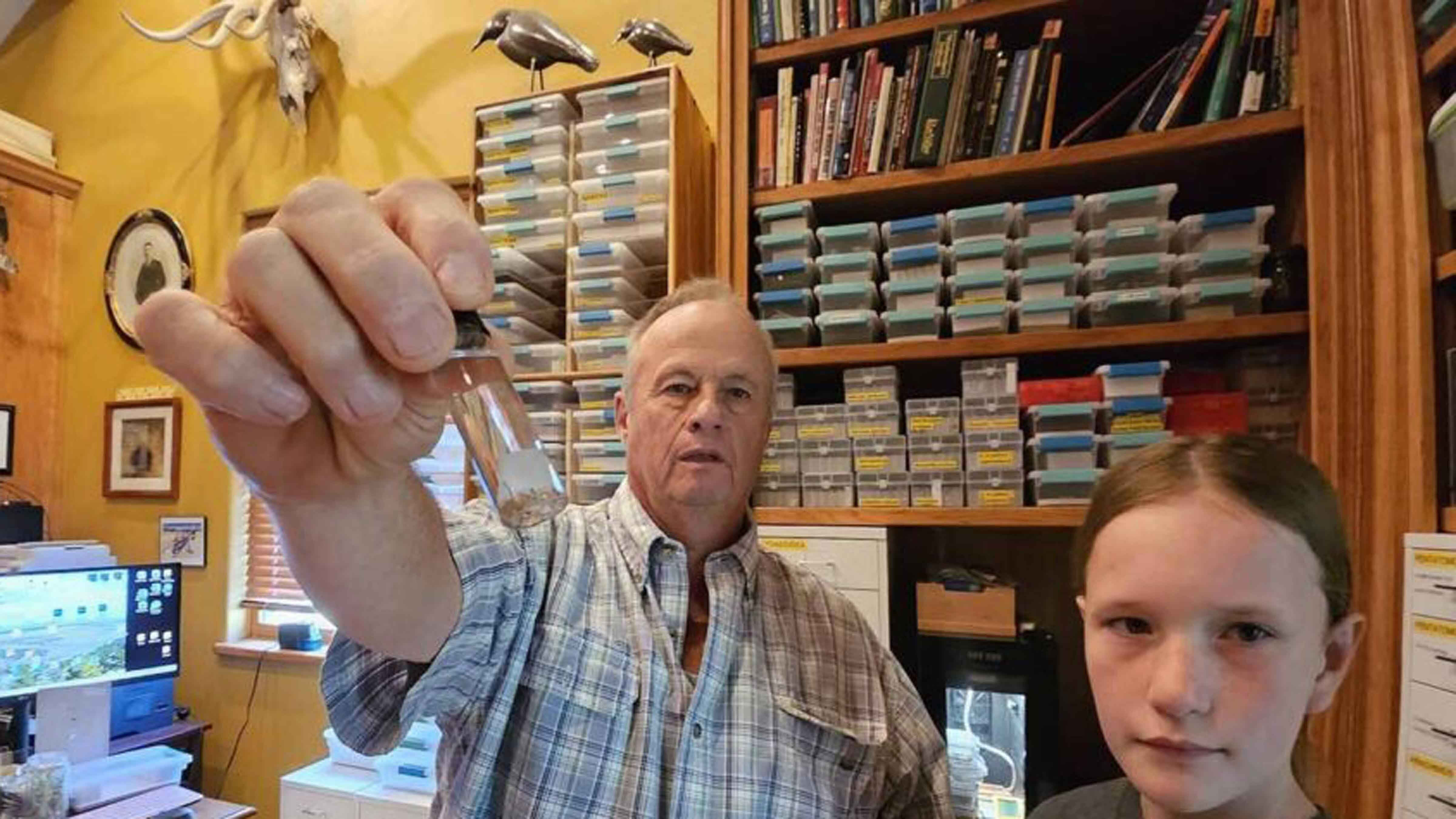Anyone looking toward Devils Tower after sunset on the Fourth of July might have noticed balls of light slowly ascending its sheer sides.
It wasn’t a beacon to the cosmos to entice another close encounter with extraterrestrial life at the nation’s first National Monument. It was a group of night climbers scaling the tower.
Wearing lights while they ascended made them appear as tiny white dots on the side of the peak.
Many aspire to climb Devils Tower, but doing it at night is an otherworldly experience. Even experienced climbers who've summited Devils Tower before say it feels like an entirely different summit at night.
"I've climbed the tower many, many, many times," said Leigh Lassle, the Gillette man who's climbed Devils Tower more than anyone else. "When I climb at night, I climb it differently. Everything changes."
Night Sight
Lassle reached new heights when he climbed Devils Tower once a month, every month, for as many consecutive months as he could.
"The number was 144 consecutive months," he told Cowboy State Daily on Friday. "Twelve years. I had carpal tunnel surgery in October 2022, and I didn't recover very well from it. Needless to say, I lost my monthlies."
Lights Required
Lassle has done several night climbs of Devils Tower. He might know every crack and crevice, but that familiarity isn't worth as much during a night climb.
"It's a surreal thing," he said. "It changes. The feel, the temperature, and everything about it is different. You can never see the top, and you can never see the bottom."
Night climbs require bright lights that make it easier to see the immediate area but obscures everything beyond it in total darkness. Lassle said that adds to the challenge and exhilaration.
"That's what makes it really cool, because you just go up and have no idea where you're at," he said. "When you're climbing at night, especially leading or even seconding, you're all by yourself. You can't use anyone else, because you can't see the guy belaying you from the top."
Anyone watching from afar can easily tell if any nighttime climbers are on Devils Tower. Their bright "light bubbles" are visible from miles away in the darkness.
"When you take multiple people up, it's like a light snake going up and down the tower," he said. "You can see this trail of lights, and it's cool."

View From Above
Lassle said he'd start his night climbs of Devils Tower around midnight after a long nap the day before.
It didn't necessarily take longer to climb at night, and he'd be able to ascend and descend within a few hours with experienced climbers.
The best climbs were during a full moon. Lassle thought that made the view from the top even more spectacular.
"You don't get to see a lot since Devils Tower sits in a hole," he said. "If you think you're going to get a cool view of city lights or anything like that, it's not there.
“But on a full moon night, you'll see the moonlight glistening off the Belle Fourche River, and there's enough light to see quite a bit of the valley."
During his night climbs, Lassle might reach the top of the tower and rappel down before sunrise or linger long enough to watch the sunrise from the summit. It all depended on when he started the climb.
"It's not uncommon to come down in the dark, especially during the summer," he said. "If you do an early morning startup, you'll start up in the dark. You'll get halfway up, see the sunrise, tag the top and come down for breakfast."
Lassle admitted it was a struggle to describe the full experience of climbing Devils Tower at night. His night climbs were unique and exhilarating.
"There are some routes in different places that you can climb on the tower and that might give you that same experience," he said. "But when you're climbing at night, it's very surreal."
Working Your Way There
The National Park Service doesn't require a special permit for a night climb of Devils Tower. Climbers can use the same registration process they would for a daytime ascent.
Lassle wouldn't recommend a night climb for anyone except experienced mountaineers. While he wouldn't say it's a challenging ascent, it does require the wherewithal that only comes from experience.
"I wouldn't recommend climbing Devils Tower at night if you didn't have very much experience," he said. "If you don't cross all your T's, dot all your I's, put your commas and periods where they need to be, it's a fatality. They call it an extreme sport for a reason, right?"
Lassle's perspective on rock climbing is that there's always an inherent risk of danger and death. But that's true with even the mundane aspects of life, which is why the danger never deterred him.
"It's like driving your car," he said. "You get in your car, drive to the grocery store and back. If you do something wrong, that's when you're going to get in an accident. (Climbing) is no different, except that you don't have a cushion for error. You must make sure it's perfect."
It might take a lot of time and climbing to gain the skills to safely summit Devils Tower at night. However, Lassle believes it's an experience every rock climber should work toward at least once in their lives.
"You should be with an experienced climber or a guide to you up there at night, and you will get a lot of enjoyment out of it," he said. "It's definitely more challenging but a lot of fun."
Andrew Rossi can be reached at arossi@cowboystatedaily.com.





